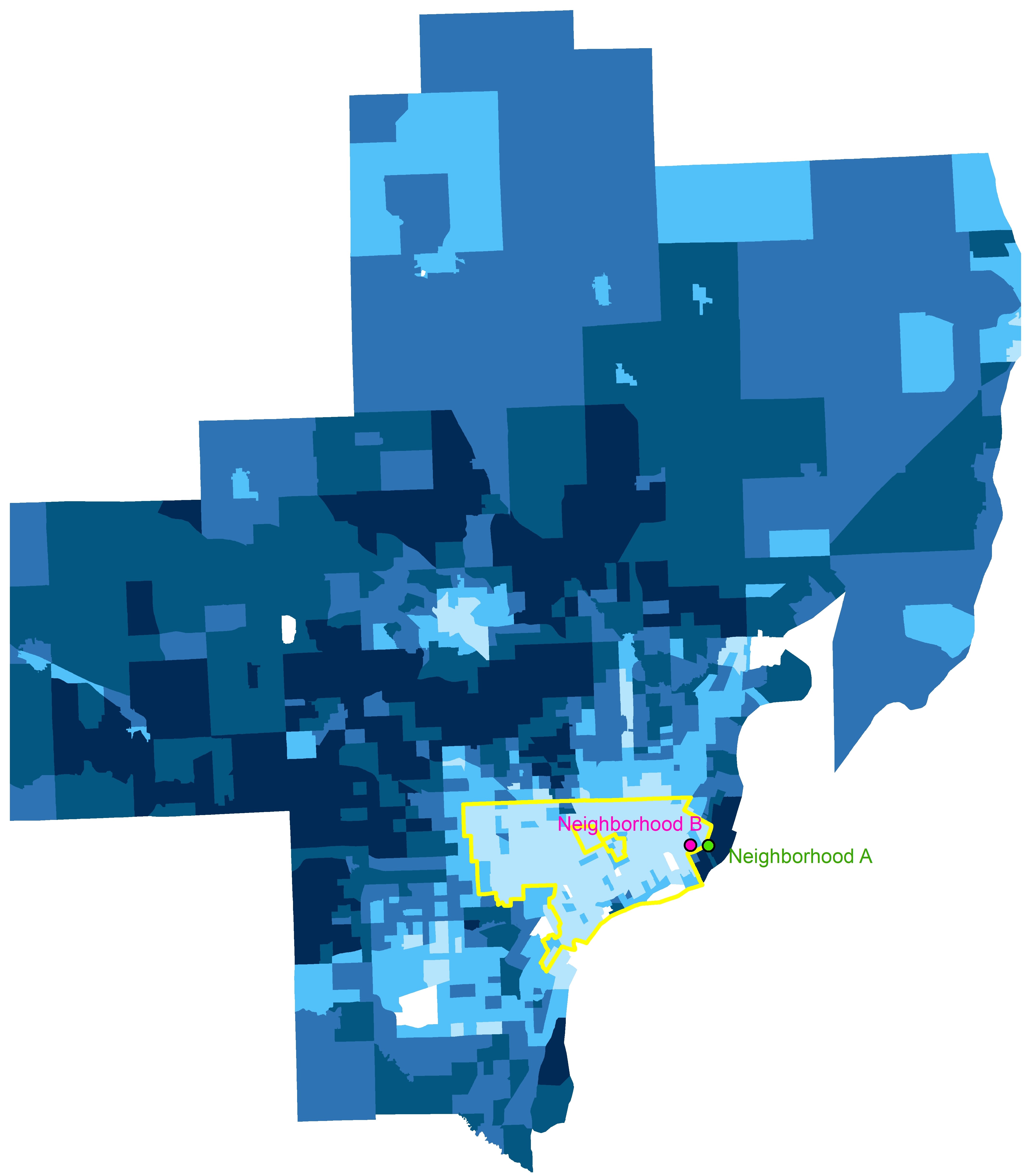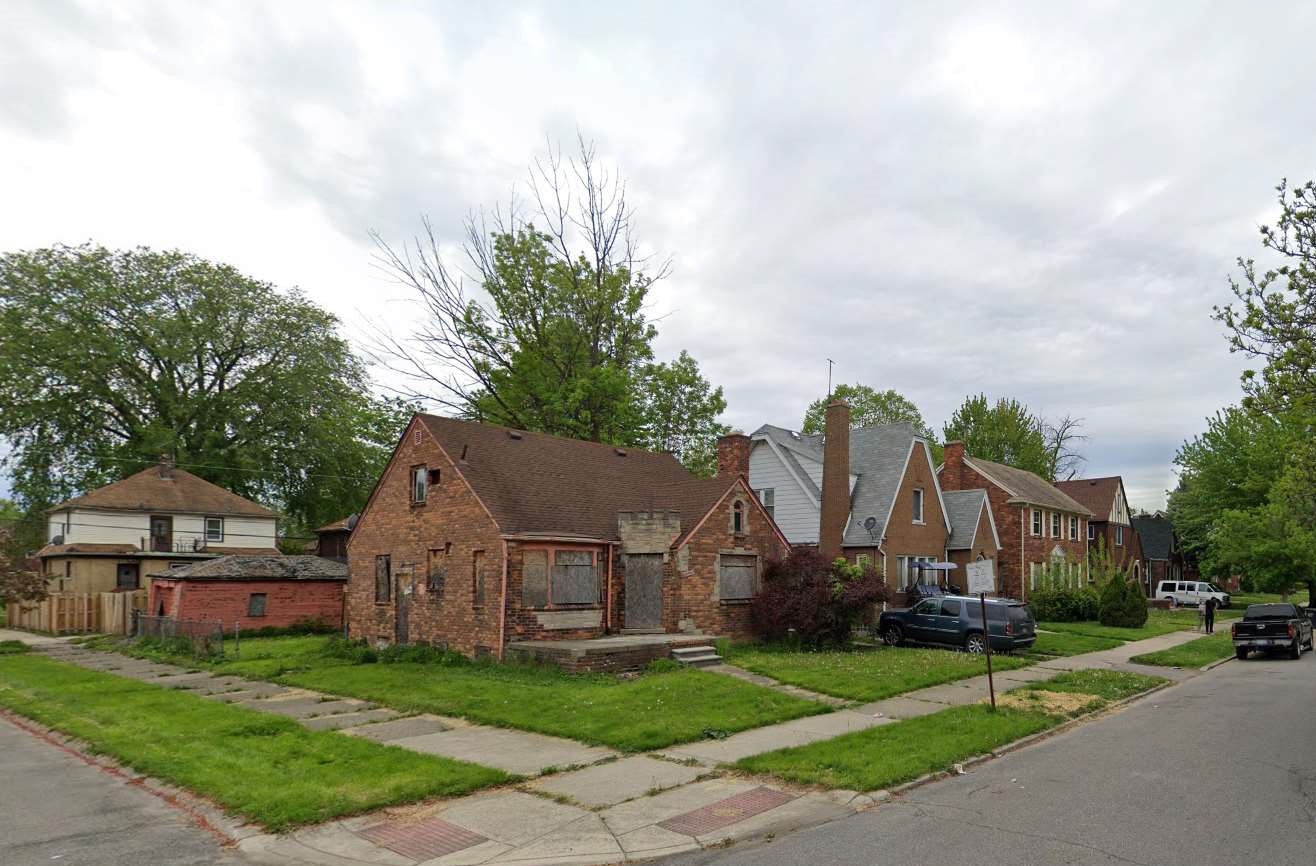In Detroit, as in all large U.S. metros, child opportunity varies widely. The map on the left shows a general pattern of higher neighborhood opportunity as the distance from the city of Detroit (outlined in yellow) increases.
But for children living just blocks apart in neighborhoods A and B—one inside the city of Detroit and one just outside the city boundaries—neighborhoods conditions are vastly different.
Economic security
A child growing up in Detroit neighborhood A enjoys a community in which economic security is the norm:
- Fewer than one in twenty people live in poverty.
- Fewer than one in five students are eligible for free or reduced-price lunch.
Meanwhile, a child growing up in bordering neighborhood B faces a host of obstacles to opportunity and wellbeing. In her neighborhood, economic adversity is the norm:
- Over half of families struggle with poverty.
- In the neighborhood schools 80% of her peers need free or reduced price lunch.
Educational opportunity
Neighborhood A has quality schools, and the child attending these schools gets a jump start up the education ladder.
- Third grade students score in the highest 10% of students nationally in terms of reading and math.
- Many high school students are enrolled in Advanced Placement classes.
The child living in neighborhood B has limited contact with peers who excel academically. This neighborhood school environment is likely to affect her own educational achievement and aspirations such as college attendance.
- In her neighborhood schools third grade students score in the lowest 10% of students nationally in terms of reading and math.
- Less than half of students graduate from high school on time.
Safe housing and access to healthy food
In neighborhood A, shown on the right, the physical conditions signal to the child prosperity and safety.
- Less than 1% of houses are vacant.
- Home ownership is almost universal (98%).
- Virtually no households face barriers to access to healthy food, and there is plenty of green space.
In neighborhood B, shown on the left, the child is growing up in a community marked by signs of distress.
- A staggering 28% of housing units are vacant. This built environment increases the risk of fires, neighborhood crime and drug use.
- As a result, her neighbors have limited household wealth, which makes families and the community even more economically vulnerable.
- For one-tenth of families, access to healthy food is difficult: they do not have a car and live more than half a mile from the nearest supermarket.
- Access to greenspace is limited: over half of the neighborhood is covered by rooftops, roads and parking lots, an environment linked to decreased physical activity and increased exposure to air pollution.






